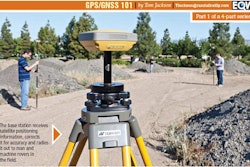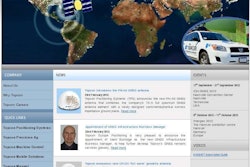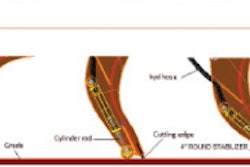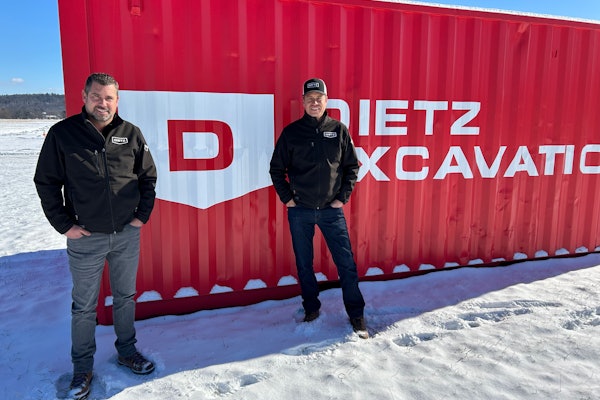 Komatsu’s new semi-auto PC490LCi-11 loads up during a demo at the manufacturer’s Catersville, Ga., customer center. Photo credit: Wayne Grayson
Komatsu’s new semi-auto PC490LCi-11 loads up during a demo at the manufacturer’s Catersville, Ga., customer center. Photo credit: Wayne GraysonWhile the vast majority of contractors in the U.S. still look at GPS machine control with a skeptical eye, Japan has embraced the technology as a way to cope with a lack of skilled labor and little hope that it will be able to replenish its construction workforce with new blood.
With the 2020 Olympic games to build for, Japan is especially feeling the pressure of such a shortage and to that end, Komatsu has been hard at work to accelerate further development of its semi-automatic machine technology, intelligent Machine Control (iMC). It has even started offering a service in Japan called Smart Construction (not to be confused with the U.S. version) that combines drones and iMC-equipped machines to offer a nearly automated full site prep service, in essence making the heavy equipment manufacturer a contractor itself.
RELATED >> Can’t Cut Too Deep: Komatsu unveils PC360, 490LCi semi-auto excavators. We put one to work
Japanese officials clearly see this as the future of construction in their country and to that end, they are already looking beyond construction on this planet. According to a report from the Nikkei Asian Review, major Japanese construction firm Kajima is working with the Japan Aerospace Exploration Agency (JAXA) to develop machine control software that would allow for fully automated construction of habitats on the moon and Mars.
And while Kajima uses Komatsu equipment, the Nikkei report says that Kajima actually eschews Komatsu’s machine control software in favor of its own.
Kajima’s A4CESL software—which is short for Automated Autonomous Advanced Accelerated Construction System for Safety, Efficiency, and Liability—currently allows operators to control and monitor GPS-equipped equipment via tablets. Kajima says it developed this in-house machine control software based on “data derived from experienced operators.” It’s unclear exactly what that means, but the concept of a machine control system somehow combining GPS data with operator expertise is certainly an interesting development.
Kajima says its system works with “high precision” and the company has used it to build dams in the Fukuoka and Oita prefectures in southern Japan, Nikkei reports.
However, Kajima’s current software wouldn’t be very effective in controlling machines in outer space in its current form as there would be a full second delay in commands reaching machines on the moon, and an even longer delay for machines on Mars. So, Kajima says it is hoping to make the software capable of fully autonomous control.
The software would enable machines to perform site prep for the construction of long-term habitats on the moon and Mars. JAXA hopes to have such habitats on the moon by 2030 and on Mars by 2040, Nikkei reports.












